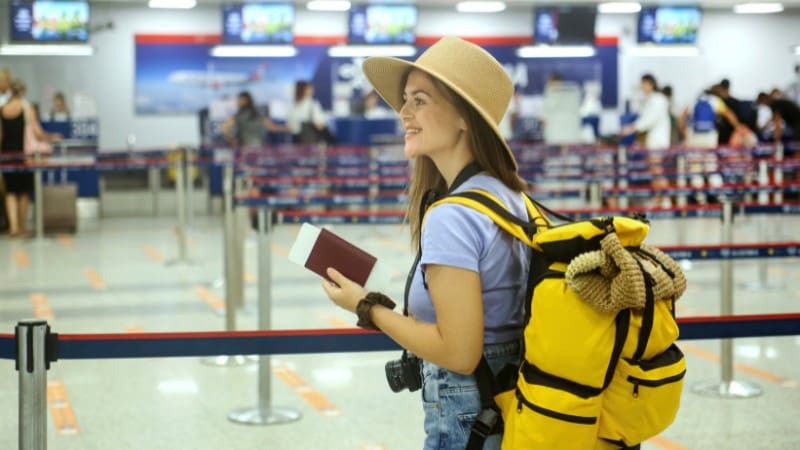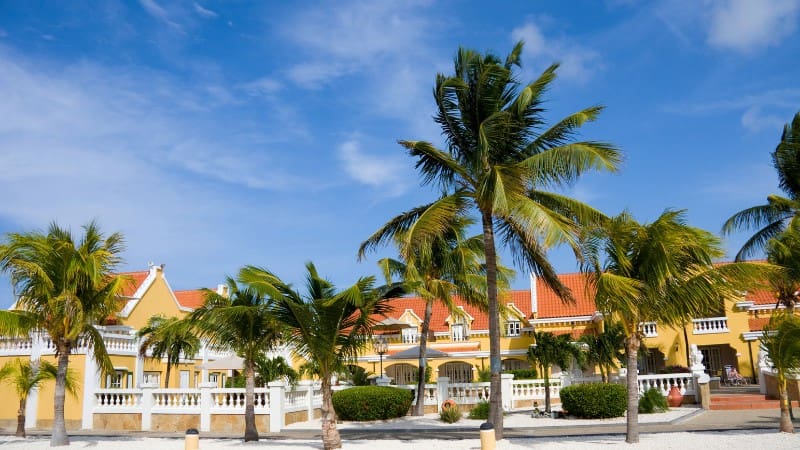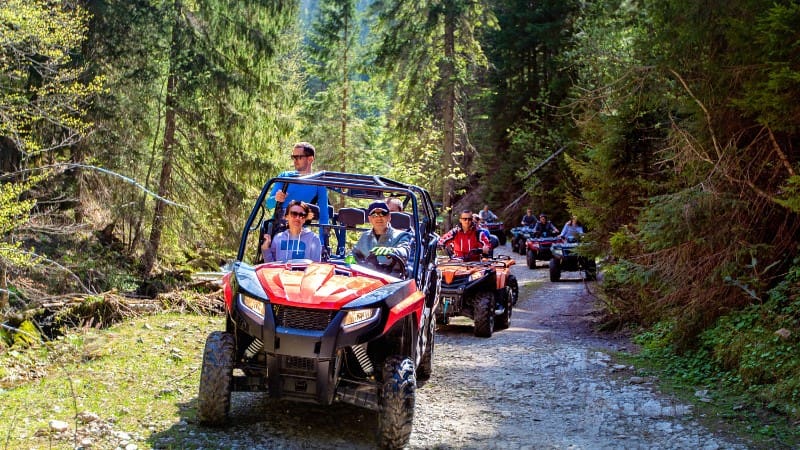In 2023, Aruba in Southern Caribeean Sea welcomed over 1.2 million visitors. That’s pretty impressive for an island that’s only 20 miles long and 6 miles wide! People just can’t get enough of Aruba’s perfect weather, lovely beaches, and friendly locals. It’s no wonder they call it “One Happy Island”!
I’ve been to Aruba more times than I can count, and I’m excited to share everything I’ve learned. I’ll walk you through all the essential Aruba travel tips for 2024. From the best time to visit to where to stay and what to do, I’ll help you plan an unforgettable trip.
Why Should You Visit Aruba in 2024?
Alright, let’s talk about why Aruba should be at the top of your travel list for 2024. Trust me, this island has a lot more to offer than just pretty beaches (though those are pretty awesome too).
Perfect Weather and Beautiful Beaches
First, Aruba’s weather is hard to beat. While other Caribbean islands worry about hurricanes, Aruba sits pretty outside the hurricane belt.
Being outside the hurricane belt means sunny skies and warm temperatures all year round. I’m talking about an average of 82°F (28°C) with a cool breeze.
The beaches are something else, too. Eagle Beach and Palm Beach often show up on lists of the world’s best beaches. Picture soft, white sand that feels like powder under your feet and water so blue it looks photoshopped.
Rich Culture and Friendly Locals
The culture in Aruba is a fun mix of Dutch, Caribbean, and South American influences. You’ll see it in the colorful buildings in Oranjestad (that’s the capital city) and taste it in the yummy local food.
What really makes Aruba special, though, is the people. Arubans are some of the friendliest folks I’ve ever met. They call their island “One Happy Island,” and it shows. Every time I visit, I feel like I’m being welcomed by old friends.
Unique Attractions and Activities
Now, if you think Aruba is just about lounging on the beach (which, let’s be honest, is pretty great), you’re in for a surprise. This little island packs in a lot of adventures:
- Arikok National Park: This place covers about 20% of the island. It’s got caves, hidden beaches, and some cool wildlife. I once saw a group of wild donkeys here!
- Snorkeling and Diving: The water around Aruba is super clear, making it perfect for underwater adventures. The Antilla shipwreck is a must-see if you’re into diving.
- Water Sports: From kitesurfing to paddleboarding, there’s no shortage of ways to play in the water.
- Butterfly Farm: This place is magical. You can walk among hundreds of colorful butterflies. It’s great for kids and adults alike.
- Off-Road Adventures: Rent a UTV and explore the rugged north coast. It’s bumpy and dusty, but so much fun!
Here’s a quick comparison of Aruba with some other popular Caribbean destinations:
| Feature | Aruba | Jamaica | Bahamas | Dominican Republic |
|---|---|---|---|---|
| Average Temp | 82°F (28°C) | 81°F (27°C) | 80°F (27°C) | 77°F (25°C) |
| Rainy Days/Year | 22 | 80 | 140 | 115 |
| Hurricane Risk | Very Low | Moderate | High | High |
| Language | Dutch, Papiamento, English | English | English | Spanish |
| Size | 69 sq mi | 4,240 sq mi | 5,358 sq mi | 18,792 sq mi |
As you can see, Aruba holds its own against these bigger islands. It’s got great weather and low hurricane risk, and English is widely spoken, making it easy for visitors.
When Is the Best Time to Visit Aruba?
The best month to visit Aruba is February. During this time, you can expect ideal weather with temperatures around 86°F (30°C) and very little rain.
It’s the dry season, making it perfect for beach activities and outdoor adventures. February is less crowded compared to the peak months of January and March, offering a pleasant experience without the excessive tourist rush.
Year-Round Climate
Aruba got great weather pretty much all year. The temperature usually hangs out between 76°F and 89°F (24°C to 32°C). And get this – it’s one of the driest islands in the Caribbean. That means less chance of rain messing up your beach day!
Peak and Off-Peak Seasons
Even though the weather’s great year-round, Aruba does have busy and quiet times. Here’s how it breaks down:
| Season | Months | Pros | Cons | Hotel Prices |
|---|---|---|---|---|
| Peak Season | Mid-Dec to Mid-Apr | Perfect weather, lots of events | More crowded | 30-50% higher |
| Off-Peak Season | Mid-Apr to Mid-Dec | Lower prices, fewer crowds | Slightly warmer temps | 30-50% lower |
| Shoulder Season | May-Jun, Sep-Nov | Good balance of price and weather | Some places might have shorter hours | 10-20% lower |
I’ve visited during all these times, and honestly, I’ve had a blast every time. If you’re looking to save some cash and don’t mind it being a bit warmer, off-peak can be great. But if you want to catch all the events and don’t mind spending a bit more, peak season’s your best bet.
Notable Events in 2024
Aruba’s got some fun events throughout the year. Here are a few you might want to plan your trip around:
- Aruba Carnival (Jan-Feb): This is the big one! The whole island turns into one big party with colorful parades, music, and dancing. It’s wild!
- Soul Beach Music Festival (May): If you’re into R&B and soul music, this is for you. They get some big-name artists performing.
- Aruba Summer Music Festival (Jun): Another one for music lovers. It’s a mix of Latin and international artists.
- Aruba Food & Wine Festival (Nov): This event showcases local and international chefs. I tried some amazing dishes here last year.
- Bon Bini Festival (Every Tuesday): This weekly event in Oranjestad is a great way to experience Aruban culture. There’s music, dance, and local crafts.
Just a heads up – these dates are based on previous years. It’s always a good idea to double-check the official Aruba tourism website for the most up-to-date info.
What Are the Travel Requirements for Visiting Aruba?

Alright, let’s talk about the nitty-gritty of getting to Aruba. Don’t worry, it’s not too complicated, but there are a few things you need to know. I’ve been through this process many times, so I’ll break it down for you:
Passport and Visa Requirements
First things first – you’ll need a valid passport to enter Aruba. Make sure it’s good for at least six months after your planned return date. Nobody wants to be turned away at the airport because of an expiring passport!
Now, the good news about visas:
- If you’re from the US, Canada, or most European countries, you don’t need a visa for stays up to 90 days.
- But if you’re planning to stay longer or you’re from a country not on the visa-exempt list, you’ll need to apply for a visa.
Here’s a quick table of visa requirements for some common countries:
| Country | Visa Needed? | Max Stay Without Visa | Required Documents |
|---|---|---|---|
| USA | No | 90 days | Valid passport, return ticket |
| Canada | No | 90 days | Valid passport, return ticket |
| UK | No | 90 days | Valid passport, return ticket |
| Australia | No | 90 days | Valid passport, return ticket |
| Germany | No | 90 days | Valid passport, return ticket |
| Brazil | Yes | N/A | Passport, visa, return ticket |
| China | Yes | N/A | Passport, visa, return ticket |
Remember, this info can change, so always check the official Aruba government website before you travel.
Customs Regulations
Aruba’s pretty chill when it comes to customs, but there are still some rules:
- You can bring in up to 200 cigarettes or 50 cigars duty-free.
- Adults can bring in up to 1 liter of spirits and 2.25 liters of wine or beer.
- If you’re bringing in goods worth more than $500, you’ll need to declare them.
One big no-no: Don’t try to bring in fresh fruits, vegetables, or meats. Trust me, you don’t want to deal with having these confiscated at customs. I once saw a guy try to bring in an entire pineapple – didn’t end well for him or the pineapple!
Health and Vaccination Requirements
As of 2024, Aruba doesn’t have any special vaccination requirements for entry. But it’s always smart to be up-to-date on routine vaccinations like measles-mumps-rubella (MMR) and tetanus.
If you’re coming from a country with a risk of yellow fever, you might need to show proof of yellow fever vaccination. But for most visitors, this isn’t an issue.
Travel Insurance Recommendations
I always recommend getting travel insurance when visiting Aruba. It’s not required, but it can be a real lifesaver if something goes wrong. Look for a policy that covers:
- Medical emergencies and evacuation
- Trip cancellation or interruption
- Lost or delayed baggage
I remember one trip where my flight got delayed and I missed a day of my vacation. My travel insurance covered the cost of rebooking my hotel. It was such a relief!
Entry Procedures at Queen Beatrix International Airport
When you land at Queen Beatrix International Airport, here’s what to expect:
- Fill out your ED card (Embarkation and Disembarkation card). You can do this online before your trip to save time.
- Go through immigration. Have your passport and ED card ready.
- Pick up your luggage at baggage claim.
- Go through customs, declaring any items if needed.
Pro Tip: The airport can get busy during peak times. If you want to breeze through, consider buying the Aruba VIP service. It includes fast-track immigration and a personal escort through the airport.
Where Should You Stay in Aruba?

Choosing the right place to stay can make your Aruba trip even more amazing. I’ve tried out all sorts of spots on the island, from fancy resorts to cozy guesthouses. Here’s the scoop on where to rest your head:
Popular Areas and Their Vibes
- Oranjestad: This is Aruba’s capital. If you love shopping and want to be near the action, this is your spot. The downside? You’re not right on the beach, but it’s just a short ride away.
- Eagle Beach: It’s known for its wide, clean beach and low-rise hotels. It’s more laid-back than Palm Beach but still has plenty to do. Perfect if you want a chill beach vacation without being too far from the fun stuff.
- Palm Beach: This is where you’ll find the big high-rise hotels and lots of restaurants and shops. It’s great for families and people who want everything at their fingertips.
- Savaneta: If you’re looking for a more local experience, check out Savaneta. It’s a fishing village with some great seafood restaurants and quiet beaches. It’s farther from the tourist spots, so you’ll need a car.
Here’s a quick comparison to help you choose:
| Area | Beach Quality | Nightlife | Dining Options | Best For |
|---|---|---|---|---|
| Oranjestad | Limited | Good | Many local options | Culture lovers, shoppers |
| Eagle Beach | Excellent | Moderate | Good mix | Relaxation seekers |
| Palm Beach | Very Good | Excellent | Abundant | Families, party-goers |
| Noord | Good | Limited | Some options | Budget travelers |
| Savaneta | Secluded beaches | Limited | Few local spots | Off-the-beaten-path explorers |
Types of Accommodations
Aruba’s got options for every budget and style:
- All-inclusive Resorts: These are great if you want a worry-free vacation. Everything’s taken care of, from meals to activities. The Riu Palace Aruba in Palm Beach is a popular choice.
- Boutique Hotels: For a more personal touch, try a boutique hotel. The Boardwalk Boutique Hotel near Palm Beach is a hidden gem with apartment-style rooms and a local feel.
- Vacation Rentals: I love renting a condo or villa, especially for longer stays. You get more space and a kitchen, which can save you money on meals. Plus, you feel more like a local.
- Budget Options: If you’re watching your wallet, look for guesthouses or smaller hotels away from the main beach areas. The Talk of the Town Hotel in Oranjestad offers good value.
My Top Picks for Different Travelers
Based on my experiences, here are my recommendations:
- For Families: Manchebo Beach Resort on Eagle Beach. It’s not too crowded and has spacious rooms.
- For Couples: Bucuti & Tara Beach Resort, an adults-only boutique hotel on Eagle Beach.
- For Budget Travelers: MVC Eagle Beach. It’s across the street from Eagle Beach and offers great value.
- For Luxury Seekers: The Ritz-Carlton Aruba on Palm Beach. It’s pricey but worth it for the amenities and service.
What Are the Must-Visit Attractions in Aruba?

Now, let’s talk about the things you can see and do in Aruba. This island may be small, but it’s packed with amazing places to visit. Here are the spots you shouldn’t miss:
Natural Wonders
- Arikok National Park: This park covers about 20% of the island and it’s unlike anything else in Aruba. You’ll see cacti, unique rock formations, and maybe even some local wildlife. Don’t miss the Natural Pool (or “Conchi” as locals call it).
- Flamingo Beach: Yes, you read that right – there’s a beach in Aruba where you can hang out with flamingos! It’s on Renaissance Island, a private island owned by Renaissance Resort. Even if you’re not staying at the resort, you can buy a day pass to visit.
- California Lighthouse: Standing tall at the northern tip of the island, this lighthouse offers some of the best views in Aruba. I always recommend going just before sunset.
Cultural and Historical Sites
- Alto Vista Chapel: This tiny yellow chapel might not look like much, but it’s got a big history. It’s known as the “Pilgrim’s Church” and it’s a peaceful spot for some quiet reflection. The drive there along the north coast is beautiful too.
- Bushiribana Ruins: These ruins are what’s left of a 19th-century gold mill. It’s a great spot for photos and to learn a bit about Aruba’s gold rush history. Plus, the rugged coastline here is stunning.
- San Nicolas: Most tourists stick to the north part of the island, but San Nicolas in the south is worth a visit. It’s got a growing street art scene, and you can get a taste of local life away from the tourist crowds.
Fun for Everyone
- Butterfly Farm: This place is magical. You can walk among hundreds of colorful butterflies in a tropical garden setting. It’s great for kids, but I’ve got to admit, I love it too!
- Donkey Sanctuary: If you’re an animal lover, you’ll enjoy visiting this sanctuary that cares for Aruba’s wild donkeys. You can pet and feed the donkeys and learn about their role in Aruba’s history.
- De Palm Island: This is like a mini water park on its own private island. There’s snorkeling, water slides, banana boat rides, and more.
Here’s a quick comparison of some of these attractions:
| Attraction | Best For | Time Needed | Cost | Unique Feature |
|---|---|---|---|---|
| Arikok National Park | Nature lovers, Hikers | Full day | $11 per person | Natural Pool |
| Flamingo Beach | Animal lovers, Beach-goers | Half day | $125 day pass | Flamingos! |
| California Lighthouse | Sightseers, Photographers | 1-2 hours | Free to view | Panoramic views |
| Alto Vista Chapel | History buffs, Spiritual seekers | 30 minutes | Free | Oldest chapel in Aruba |
| San Nicolas | Art lovers, Culture seekers | Half day | Free | Street art scene |
| Butterfly Farm | Families, Nature lovers | 1-2 hours | $15 adults, $8 kids | Interactive butterfly experience |
| De Palm Island | Families, Water sport enthusiasts | Full day | $115 adults, $89 kids | All-inclusive water park |
What Activities Can You Enjoy in Aruba?

Aruba isn’t just about beautiful beaches and sightseeing – there’s a whole world of fun activities to try. Whether you’re an adrenaline junkie or prefer a more relaxed pace, there’s something for everyone. Here’s a rundown of some of the best activities Aruba has to offer:
Water Sports
- Snorkeling and Scuba Diving: The waters around Aruba are teeming with marine life. Some of my favorite spots include Boca Catalina for snorkeling and the Antilla Shipwreck for diving.
- Windsurfing and Kitesurfing: Aruba’s steady trade winds make it a paradise for wind sports. Fisherman’s Huts near Palm Beach is the go-to spot.
- Stand-Up Paddleboarding (SUP): For a more relaxed water activity, try SUP. It’s a great workout and a fun way to explore the coastline. Palm Beach is perfect for beginners.
Land Adventures
- UTV and ATV Tours: Exploring Aruba’s rugged north coast on a UTV or ATV is an adventure you won’t forget. You’ll see parts of the island most tourists never do. Just be prepared to get dusty!
- Hiking in Arikok National Park: There are several hiking trails in the park, ranging from easy walks to more challenging treks. The Miralamar Trail offers stunning views of the coastline.
- Horseback Riding: Riding along the beach at sunset is a magical experience. Rancho Notorious and Gold Mine Ranch offer great tours for all skill levels.
Cultural Experiences
- Bon Bini Festival: This weekly festival in Oranjestad is a great introduction to Aruban culture. There’s music, dance, and local crafts. It happens every Tuesday evening in the courtyard of Fort Zoutman.
- San Nicolas Street Art Tour: San Nicolas, Aruba’s “Sunrise City,” has become an open-air art gallery. Take a walking tour to see colorful murals and learn about the island’s history and culture.
- Culinary Tours: Food is a big part of Aruban culture. Consider taking a downtown walking tour that includes stops at local eateries, or join a cooking class to learn how to make traditional Aruban dishes.
Here’s a comparison of some popular activities:
| Activity | Skill Level | Cost | Duration | Best Time | Location |
|---|---|---|---|---|---|
| Snorkeling | Beginner | $40-$60 | 2-3 hours | Morning | Boca Catalina, Mangel Halto |
| Scuba Diving | Intermediate | $100-$150 | Half day | Morning | Antilla Shipwreck, Pedernales Wreck |
| Windsurfing | Beginner to Advanced | $50-$100 | 1-2 hours | Afternoon | Fisherman’s Huts |
| UTV Tour | Beginner | $100-$150 | 4-5 hours | Morning or Afternoon | North Coast, Arikok National Park |
| Hiking | Beginner to Intermediate | Park entry $11 | 2-4 hours | Early Morning | Arikok National Park |
| Bon Bini Festival | All | Free | 2-3 hours | Tuesday Evening | Fort Zoutman, Oranjestad |
How Can You Experience Aruban Cuisine?

One of the best ways to really get to know Aruba is through its food. The local cuisine is a tasty mix of Dutch, Caribbean, and South American influences. Let me walk you through some must-try dishes and the best places to find them.
Must-Try Local Dishes
- Keshi Yena: This is Aruba’s national dish. It’s basically a large ball of cheese stuffed with spiced meat (usually chicken), olives, and prunes. I know it sounds a bit weird, but it’s delicious! I had my first Keshi Yena at The Old Cunucu House, and I’ve been hooked ever since.
- Fresh Seafood: Being an island, Aruba’s got some fantastic seafood. Fresh catches like mahi-mahi, red snapper, and Caribbean lobster are common on menus. The grilled fish at Zeerovers is some of the best I’ve ever had.
- Pastechi: These are like little half-moon shaped pastries filled with cheese, meat, or seafood. They’re perfect for a quick snack. You can find them at most local bakeries and food trucks.
- Funchi and Pan Bati: These are two common side dishes. Funchi is similar to polenta, while Pan Bati is a sweet pancake-like bread. Both are great for soaking up sauces.
Popular Restaurants and Food Markets
- Zeerovers: This place is a bit off the beaten path in Savaneta, but it’s worth the trip. It’s a no-frills seafood joint where you can watch the fishermen bring in the day’s catch.
- Papiamento Restaurant: For a more upscale experience, try Papiamento. It’s set in a 126-year-old Aruban cunucu house and serves traditional Aruban cuisine with a gourmet twist.
- Local Food Truck: Don’t miss out on Aruba’s food truck scene. My favorite is the Hang Out Bar food truck near Eagle Beach. Their fish tacos are incredible.
- Waffle-tastic: For dessert, head to this spot in Palm Beach for some amazing waffles. The fruity pebbles waffle is a fun, Instagram-worthy treat.
- Aruba’s Marketplace: Every Wednesday evening, there’s a local market in downtown Oranjestad. It’s a great place to try different local foods and buy fresh produce.
Here’s a comparison of some popular dining spots:
| Restaurant | Cuisine | Price Range | Best For | Must-Try Dish | Location |
|---|---|---|---|---|---|
| Zeerovers | Seafood | $ | Casual lunch | Fried fish platter | Savaneta |
| Papiamento | Aruban/International | $$$ | Special dinner | Keshi Yena | Noord |
| Hang Out Bar | Street Food | $ | Quick bites | Fish tacos | Eagle Beach |
| The Old Cunucu House | Traditional Aruban | $$ | Authentic experience | Goat stew | Palm Beach |
| Waffle-tastic | Desserts | $ | Sweet treats | Fruity pebbles waffle | Palm Beach |
| Madame Janette | International | $$$ | Romantic dinner | Almond crusted grouper | Palm Beach |
| Yemanja Woodfired Grill | Fusion | $$ | Casual dinner | Seafood paella | Oranjestad |
Aruban Drinks to Try
- Aruba Ariba: This fruity cocktail is made with vodka, rum, creme de banana, orange juice, and cranberry juice.
- Balashi Beer: This is Aruba’s local beer. It’s light and refreshing – perfect for a beach day.
- Coecoei: This is a red liquor made from the sap of agave plants. It’s often used in cocktails.
Tips for Dining in Aruba
- Reservations: For popular restaurants, especially during peak season, make reservations in advance.
- Tipping: A service charge is often included in the bill. If not, 15-20% is standard.
- Dress code: While many places are casual, some upscale restaurants require closed-toe shoes and collared shirts for men.
- Water: Tap water in Aruba is safe to drink, so don’t worry about ordering bottled water unless you prefer it.
What Should You Know About Getting Around Aruba?

Getting around Aruba is pretty easy, but there are a few things you should know to make your trip smoother. Here’s a comparison of these transportation options:
| Method | Cost | Flexibility | Best For | Limitations | Booking Advice |
|---|---|---|---|---|---|
| Rental Car | $$$ | High | Island-wide exploration | Parking, unfamiliar roads | Book early in peak season |
| Public Bus | $ | Medium | Budget travel, short trips | Limited schedule, routes | Buy day passes for savings |
| Taxi | $$$ | Medium | Short trips, airport transfers | Expensive for long distances | Agree on fare beforehand |
| UTV/ATV | $$ | Low | Off-road adventures | Not for everyday use | Book guided tours for safety |
| Bicycle | $ | Medium | Short trips, fitness enthusiasts | Limited range, weather dependent | Rent from hotels or shops |
Driving Tips in Aruba
If you decide to rent a car, here are some things to keep in mind:
- Drive on the right side of the road.
- Seatbelts are mandatory for all passengers.
- Speed limits are in kilometers per hour (60 km/h in urban areas, 80 km/h on highways).
- Watch out for free-roaming goats and donkeys, especially in rural areas.
- Gas stations are not self-service – an attendant will fill up your car.
- Many roads don’t have street names, so landmarks are often used for directions.
My Personal Transportation Strategy
When I visit Aruba, I usually rent a car for most of my stay. It’s great for reaching different beaches, restaurants, and attractions.
However, if I’m planning a night out with drinks, I’ll use taxis or the bus to be safe. For exploring the national park, I love renting a UTV for a day – it’s bumpy but so much fun!
How Much Does a Trip to Aruba Cost?
One of the most common questions I get about Aruba is, “How much should I budget for my trip?” Well, the answer can vary quite a bit depending on your travel style, but I’ll break it down for you based on my experiences.
Accommodation Expenses
Where you stay can be one of the biggest factors in your Aruba budget. Here’s a rough guide:
- Luxury Resorts ($300-$800+ per night) – Places like the Ritz-Carlton or the Hyatt Regency fall into this category.
- Mid-range Hotels ($150-$300 per night) – This includes many of the beachfront hotels on Eagle and Palm Beach.
- Budget Options ($50-$150 per night) – This might be a small guesthouse, Airbnb, or a hotel further from the beach.
Pro Tip: Prices can spike during peak season (December to April), sometimes by as much as 50%!
Food and Dining Costs
- High-end Restaurants ($50-$100+ per person) – For a fancy dinner at a place like Papiamento or Madame Janette’s.
- Mid-range Restaurants ($20-$50 per person) – This covers most sit-down restaurants in tourist areas.
- Budget Eats ($5-$20 per person) – Think local eateries, food trucks, or cooking your own meals.
Here’s a sample food budget for a day:
| Meal | Budget | Mid-range | Luxury | Ex. Budget Option | Ex. Luxury Option |
|---|---|---|---|---|---|
| Breakfast | $5 | $15 | $25 | Pastry & coffee at local bakery | Resort breakfast buffet |
| Lunch | $10 | $20 | $40 | Food truck meal | Beachfront restaurant |
| Dinner | $15 | $40 | $80+ | Local eatery | Fine dining restaurant |
| Drinks | $5 | $15 | $30 | Local beer | Cocktails at resort bar |
| Snacks | $5 | $10 | $20 | Fruit from market | Resort room service |
| Total | $40 | $100 | $195+ |
Activities and Entertainment Budgeting
The cost of activities can add up quickly, but there are also plenty of free things to do:
- Beach days: Free! (Just bring your own snacks and drinks)
- Snorkeling: $15-$50 (equipment rental or guided tour)
- Scuba diving: $100-$150 per dive
- UTV Tour: $100-$150 per person
- Sunset sailing cruise: $50-$100 per person
Pro Tip: I’d recommend budgeting about $50-$100 per day for activities, depending on what you want to do.
Transportation Costs
How you get around will impact your budget:
- Car rental: $40-$70 per day
- Taxi: $15-$30 for most trips within the hotel areas
- Public bus: $2.60 for a single ride, $10 for a day pass
Sample Total Budget
Here’s a rough estimate for a 7-day trip for two people:
| Expense | Budget | Mid-range | Luxury |
|---|---|---|---|
| Flights | $800 | $1200 | $2000 |
| Accommodation | $700 | $1750 | $4200 |
| Food | $560 | $1400 | $2730 |
| Activities | $700 | $1400 | $2100 |
| Transportation | $150 | $450 | $750 |
| Miscellaneous | $200 | $400 | $600 |
| Total | $3110 | $6600 | $12380 |
Remember, these are rough estimates. Your actual costs could be higher or lower depending on your specific choices and the time of year you visit.
Money-Saving Tips for Budget Travelers
- Visit during the off-season (May to November). You can save up to 50% on accommodation.
- Stay in an Airbnb or guesthouse instead of a resort.
- Cook some of your own meals. Local supermarkets have everything you need.
- Use the public bus system instead of taxis.
- Look for happy hour specials at bars and restaurants.
- Bring your own snorkel gear instead of renting.
- Take advantage of free activities like beach hopping and exploring downtown Oranjestad.
A Note on Tipping
Tipping is expected in Aruba, similar to the US. Here’s a quick guide:
- Restaurants: 15-20% if a service charge isn’t already included
- Taxis: 10-15%
- Tour guides: 10-15%
- Hotel staff: $1-$2 per bag for bellhops, $2-$5 per day for housekeeping
Currency and Payment Methods
The official currency of Aruba is the Aruban Florin, but US dollars are widely accepted. Credit cards are also commonly used, especially in tourist areas. However, it’s always good to have some cash on hand for small purchases or in case you visit more local spots.
What Should You Pack for Your Aruba Trip?
Packing for Aruba is pretty straightforward, but there are a few essentials you don’t want to forget. Here’s my tried-and-true packing list based on countless trips to the island:
| Category | Essential Items | Optional Items | Tips |
|---|---|---|---|
| Clothing | Swimwear, cover-ups, shorts, t-shirts | Light jacket, nice outfit | Pack light, breathable fabrics |
| Beach Gear | Sunscreen, sunglasses, beach bag | Snorkel gear, beach towel | Bring reef-safe sunscreen |
| Toiletries | Toothbrush, toothpaste, deodorant | Shampoo, conditioner | Hotels often provide basic toiletries |
| Health & Safety | Medications, first-aid kit | Insect repellent, aloe vera | Don’t forget any prescription meds |
| Electronics | Phone, camera, chargers | E-reader, tablet | Bring a waterproof case for beach days |
| Documents | Passport, travel documents | Copies of important docs | Keep copies separate from originals |
How Can You Stay Safe While Traveling in Aruba?
Aruba is generally a safe destination, but like anywhere else, it’s important to take some precautions. It’s always good to be prepared. Here’s some key information:
- Emergency number: 911
- Police: 100
- Ambulance: 912
- Fire Department: 911
The main hospital is Dr. Horacio Oduber Hospital in Oranjestad.
Here’s a quick comparison of safety considerations in different areas of Aruba:
| Area | Crowd Level | Beach Safety | Night Safety | Notable Precautions | Emergency Services |
|---|---|---|---|---|---|
| Palm Beach | High | Lifeguards present | Well-lit, patrolled | Watch for water sports | Police station nearby |
| Eagle Beach | Moderate | Lifeguards present | Less lit than Palm Beach | Strong currents possible | Lifeguard stations |
| Oranjestad | Moderate | N/A | Well-lit in tourist areas | Be cautious in less populated areas at night | Main hospital located here |
| San Nicolas | Low | No lifeguards | Exercise caution at night | Less touristic, be aware of surroundings | Local police station |
| Arikok National Park | Low | No lifeguards, rough waters | Closed at night | Hire a guide for hikes, bring water | Park rangers on duty |
Aruba’s waiting for you, and trust me, it’s full of surprises! Don’t stick too closely to your plans – sometimes the best parts of a trip are the things you didn’t expect.
After you’re back home, you might find yourself smiling at random moments, remembering your Aruba adventures. Want more tips from folks who’ve been there? Check out destination.com. Have a great time, and enjoy those perfect beaches!
Is Aruba Tourist Friendly?
Yes, Aruba is very tourist-friendly! It has a low crime rate, especially in areas like Oranjestad and Eagle Beach. The locals are welcoming and speak multiple languages, making visitors feel comfortable and safe. Aruba offers various accommodations and activities, ensuring a great experience for everyone.
Which Part of Aruba is Best?
The best part of Aruba to visit is Eagle Beach. It’s famous for its white sand, clear turquoise water, and relaxed atmosphere. Perfect for families and water sports, it also offers plenty of amenities like public palapas and rentable beach chairs.
What Month is the Cheapest to Go to Aruba?
The cheapest time to visit Aruba is between September and November. During these months, you can find significantly lower prices on flights and accommodations due to it being the off-peak season. However, be prepared for hotter temperatures and higher humidity, as well as some rainfall.






